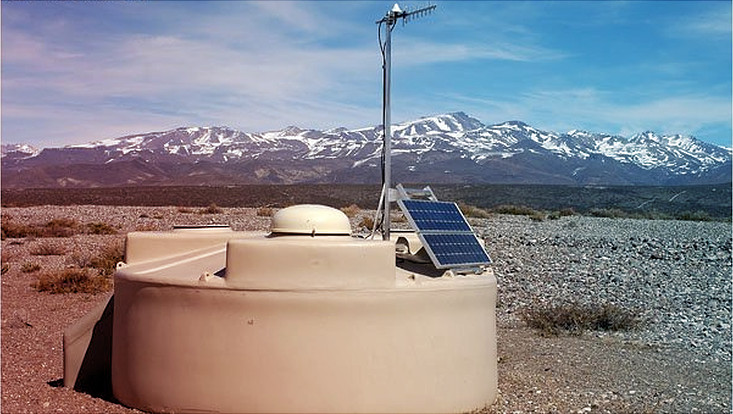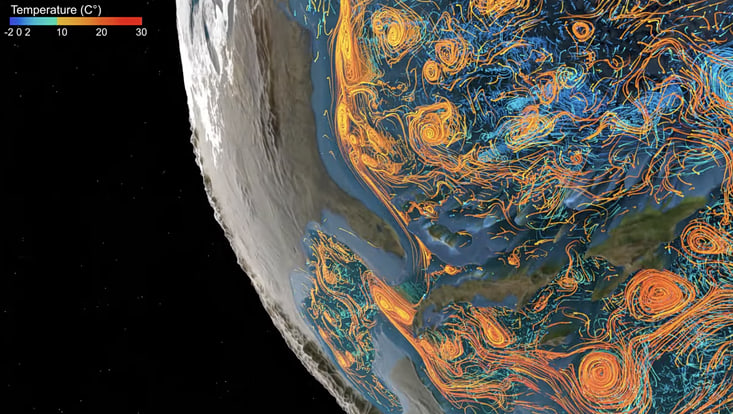Solving the conundrumParticle showers from far-off galaxies
19 October 2017, by Viola Griehl

Photo: www.auger.org/ Guillermo E. Sierra
Radiation from outer space continuously reaches Earth in the form of electrically charged particles. While many hail from the sun, there are also extremely energy-rich particles whose origins have remained unexplained since their discovery in the 1960s. Over 400 researchers from 18 countries are researching this phenomenon at the Pierre Auger Observatory in Argentina, the world’s largest hybrid detector to study high-energy cosmic rays. The researchers have now discovered that the rays come from outside our solar system and, with great probability, outside our own galaxy. As part of a collaborative project under the aegis of the Federal Ministry of Research, Prof. Dr. Günter Sigl from the Institute for Theoretical Physics II is heading a team from Universität Hamburg that will also take part in the research.
Prof. Sigl, what exactly is a cosmic particle shower?
Particles smaller than atoms penetrate the atmosphere with the energy of a tennis ball hit with a hard swing. When they interact with molecules in the air, they split into so-called “secondary particles.” These are, for example, pions, meaning particles of about one-tenth the mass of a proton. These interact in turn with the atmosphere and create more secondary particles, resulting in a cascade. This atmospheric shower continues until the energy per particle no longer suffices to produce further pions. The Pierre Augur experiment allows us to measure the by-products of these particles.
The mystery consisted in the unexplained origins of certain high-energy particles. When were these rays discovered and how can you even trace them?
In 1912 Viktor Hess discovered that at greater altitudes, electroscopes (instruments for measuring a body’s electrical charges) discharged more quickly above Earth’s surface. This could only be explained by ionizing radiation from outside Earth’s atmosphere. In 1938 Pierre Auger—for whom the experiment has been named—discovered coincidental signals in particle detectors separated by several meters, indicating the existence of expansive atmospheric showers. In the Pierre Auger experiment, researchers are trying to prove these showers using photomultipliers—extremely sensitive light sensors. They capture signals catalyzed by electrons, positrons, and muons. The atmospheric showers also create flourescent rays that you can see with a telescope.
How did you find out that rays come from outside the Milky Way?
The detectors measure the particles’ direction of arrival. If the sources were located in our Milky Way, the direction of arrival would have to appear closer to our galaxy. The surplus of roughly 12% of particles arriving from one half of outer space relative to the particle rate from the other half indicates, however, a direction 120 degrees away from the galactic center.
What role does your team play in the project?
The Hamburg group is a team of phenomenologists. That means we describe processes and characteristics using theoretical models and we work at the junction of the experiment and astrophysical scenarios to interpret the data. In particular, we simulate cosmic ray distribution while focusing on interactions and perturbations in cosmic magnetic fields.
What happens next?
We will try to determine the sources of these particles. To do so, we will compare measurement results with model predictions and simulate arrival directions using various hypotheses for the distribution of sources and magnetic fields. We want to find out which combination of protons and light and heavy atom nuclei we are dealing with. We are also working with particle physics groups at Universität Hamburg to do this.


